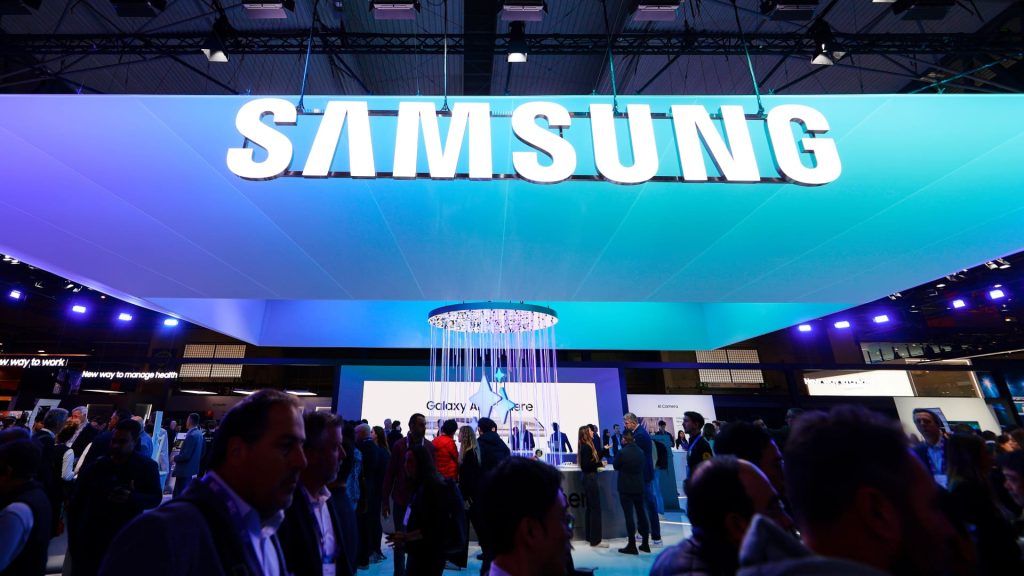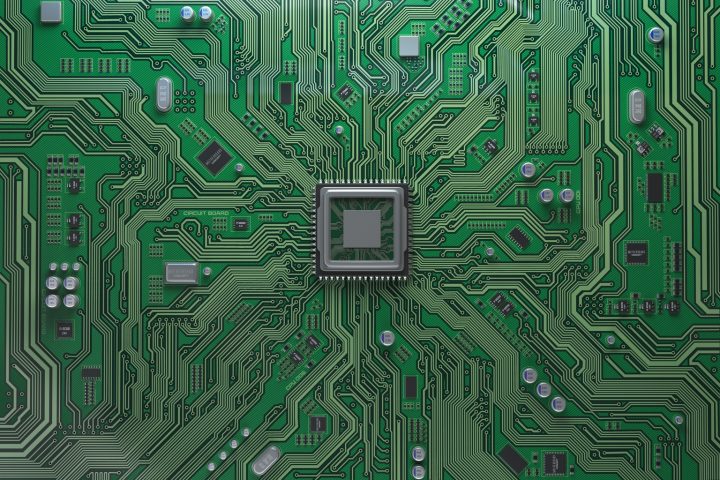Advanced Micro Devices on Tuesday proved it is an emerging force in the AI chip race, as its data center business helped fuel better-than-expected quarterly results. Revenue in the three months ended June 29 advanced 9% year over year to $5.84 billion, topping estimates of $5.72 billion, according to LSEG. Adjusted earnings per share (EPS) rose 19% on an annual basis to 69 cents, beating estimates by a penny, LSEG data showed. Advanced Micro Devices Why we own it: AMD’s relatively new artificial intelligence chip, the MI300X, is carving out a niche in that fast-growing market at the same time a new personal computer refresh cycle is getting underway. AMD CEO Lisa Su also has proven to be one of the best executives in the chip industry. Competitors: Intel , Nvidia and Broadcom Weight in Club portfolio: 1.49% Most recent buy: July 18, 2024 Initiated: July 15, 2024 Bottom line AMD’s report landed at a rocky moment for the stock and its fellow members of the artificial intelligence trade. At least for a moment, the chipmaker’s results and upbeat commentary on its AI business are soothing the worst of investor fears, with shares jumping more than 7% in extended trading. It’s a much-needed lift. AMD has been punished during the July market rotation out of tech winners and into small caps and other lagging parts of the market. Since the market was turned on its head July 11 , AMD shares had registered just two positive sessions, falling more than 24% in total and turning negative year to date. We began building our position a few days later and used subsequent weakness to build out the stake. Our most-recent buy was on July 18 at $155.67 a share. It wasn’t fun watching the stock fall almost $20 more per share — ultimately closing Tuesday just above $138 — but AMD’s results proved our plan to reinvest in the stock was right. The crux of our thesis is its burgeoning AI chip business, and Tuesday’s updates were encouraging. Sales of its MI300 chips — high-powered processors used in data centers to run and train AI applications — exceeded $1 billion in the quarter, the first time above that threshold since launching in late 2023. And crucially, AMD upped its full-year sales projections for those chips to more than $4.5 billion, a $500 million increase from the guidance offered in April. The MI300 guidance was by far the most important part of the report, and the stock reaction indicates that investors are satisfied with the magnitude of the hike, even though there was some chatter on Wall Street that some influential players were expecting a $5 billion projection. AMD sold off on its first-quarter earnings report due in large part to its MI300 sales guidance falling short of sky-high expectations. At this point, the market seems to have developed a more realistic view of what AMD can do, especially considering the company has run into supply constraints in trying to meet demand. Investor expectations have surely come down in the stock’s recent sell-off as well. On the earnings call Tuesday, CEO Lisa Su said AMD has made progress on MI300 availability, but expects supply to remain tight through 2025. That commentary echoes what we’ve been hearing from its main rival in the AI chip market, longtime Club holding Nvidia. In both cases, demand outpacing supply is the definition of a high-quality problem. Nvidia remains the dominant player in AI chips, but AMD is continuing to carve out a lane in the rapidly expanding market. Su also spoke favorably about AMD’s partnership with fellow Club holding Microsoft , which is a key buyer of MI300 chips. Among the highlights, Su said Microsoft has expanded its use of the AI chips for certain software applications, including messaging app Teams. For its part, Microsoft on Tuesday night reiterated its guidance that fiscal year 2025 capital expenditures will be higher than fiscal year 2024 — and AI chips are a big part of that spending. The second part of our thesis in AMD is the recovery in personal computer sales, driven by both the general need to upgrade PCs bought during the Covid-19 pandemic and the roll out of AI-infused machines. Momentum in the PC business continued in the second quarter alongside rosy commentary about the back half of the year. Su said AMD is expecting its PC segment to experience stronger-than-normal seasonality as machines hit the market containing its new “Zen 5” processors. “That’s the primary reason that we see above-seasonal. The AI PC element is certainly one element of that, but there is just the overall refresh,” Su said. Su suggested that AI PCs will be a bigger contributor to growth down the road. “Into 2025, you’re going to see AI PCs across sort of a larger set of price points, which will also open up more opportunities,” she said. Despite the positive results, we are lowering our price target by $10 to $200 to reflect the lower multiples the market is giving tech and semiconductor stocks. We’re reiterating our 1 rating. We look forward to hearing more about the quarter from Su on Wednesday morning on CNBC. Jim Cramer is set to interview her on “Squawk on the Street” before the opening bell. AMD YTD mountain AMD’s year-to-date stock performance. Quarterly results Data center sales of $2.83 billion exceeded estimates and more than doubled year over year, fueled by the “steep ramp” in AI chip sales, Su said. Revenue also was up 21% compared with the January-to-March period — a healthy sequential increase. The legacy part of AMD’s data center business — sales of traditional server processors — continues to do well and take market share from incumbents, executives said. Although AMD didn’t identify the company by name, it’s been stealing share from Intel for years. AMD’s data center business is now nearly 50% of companywide revenues, up from 37% in the fourth quarter of 2023. AMD’s client segment — home to sales of processors for desktop and laptop computers — continued its recovery from the Covid-19 pandemic hangover, generating $1.49 billion in revenue during the quarter. That’s up 49.5% year over year and slightly better than the $1.44 billion expected by analysts. On the other hand, AMD’s gaming unit — home to chips for gaming consoles and 3D graphics — was even weaker than expected, sinking 59% annually to $648 million. While that’s even steeper year-over-year decline than the 48% first-quarter drop, management had been clear that more pain was expected here amid softness in console sales. Embedded — the segment housing Xilinx, which AMD acquired in 2022 — cleared a low bar with a better-than-expected $861 million in revenue. The unit was down 41% year over year as customers, which span a range of end markets from industrial to automotive and telecommunications, continue to work through excess inventory. However, revenue was up 2% sequentially, in line with management’s expectations for a gradual second-half recovery. Su reaffirmed that expectation Tuesday, noting that order patterns improved in the quarter. Guidance AMD said it expects third-quarter revenue of roughly $6.7 billion, plus or minus $300 million. Analysts were expecting a Q3 guide of $6.6 billion, according to FactSet. Third-quarter gross margins are expected to be 53.5%, which would be a slight quarter-over-quarter improvement and in line with Wall Street expectations. By segment, Su said the gaming unit will be down double digits while embedded is projected to be up single-digits sequentially. Unsurprisingly, data center will be the largest driver of revenue growth in the third quarter, Su said, followed by the client segment. Within data center, sales of both AI chips and traditional server chips will grow in the third quarter, Su said. As mentioned, AMD upped its forecast for AI chip sales in 2024 to more than $4.5 billion, a $500 million increase from the guidance offered in April. (Jim Cramer’s Charitable Trust is long AMD. See here for a full list of the stocks.) As a subscriber to the CNBC Investing Club with Jim Cramer, you will receive a trade alert before Jim makes a trade. Jim waits 45 minutes after sending a trade alert before buying or selling a stock in his charitable trust’s portfolio. If Jim has talked about a stock on CNBC TV, he waits 72 hours after issuing the trade alert before executing the trade. THE ABOVE INVESTING CLUB INFORMATION IS SUBJECT TO OUR TERMS AND CONDITIONS AND PRIVACY POLICY , TOGETHER WITH OUR DISCLAIMER . NO FIDUCIARY OBLIGATION OR DUTY EXISTS, OR IS CREATED, BY VIRTUE OF YOUR RECEIPT OF ANY INFORMATION PROVIDED IN CONNECTION WITH THE INVESTING CLUB. NO SPECIFIC OUTCOME OR PROFIT IS GUARANTEED.
Advanced Micro Devices on Tuesday proved it is an emerging force in the AI chip race, as its data center business helped fuel better-than-expected quarterly results.
Read the full article here
Post Views: 174







